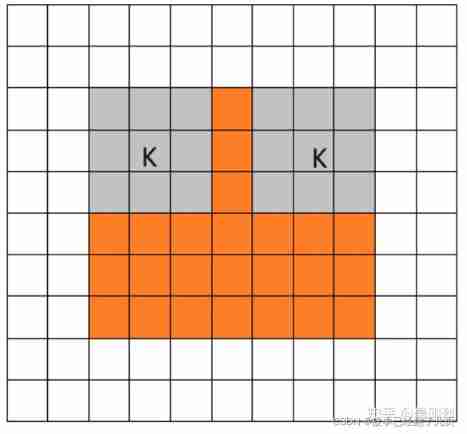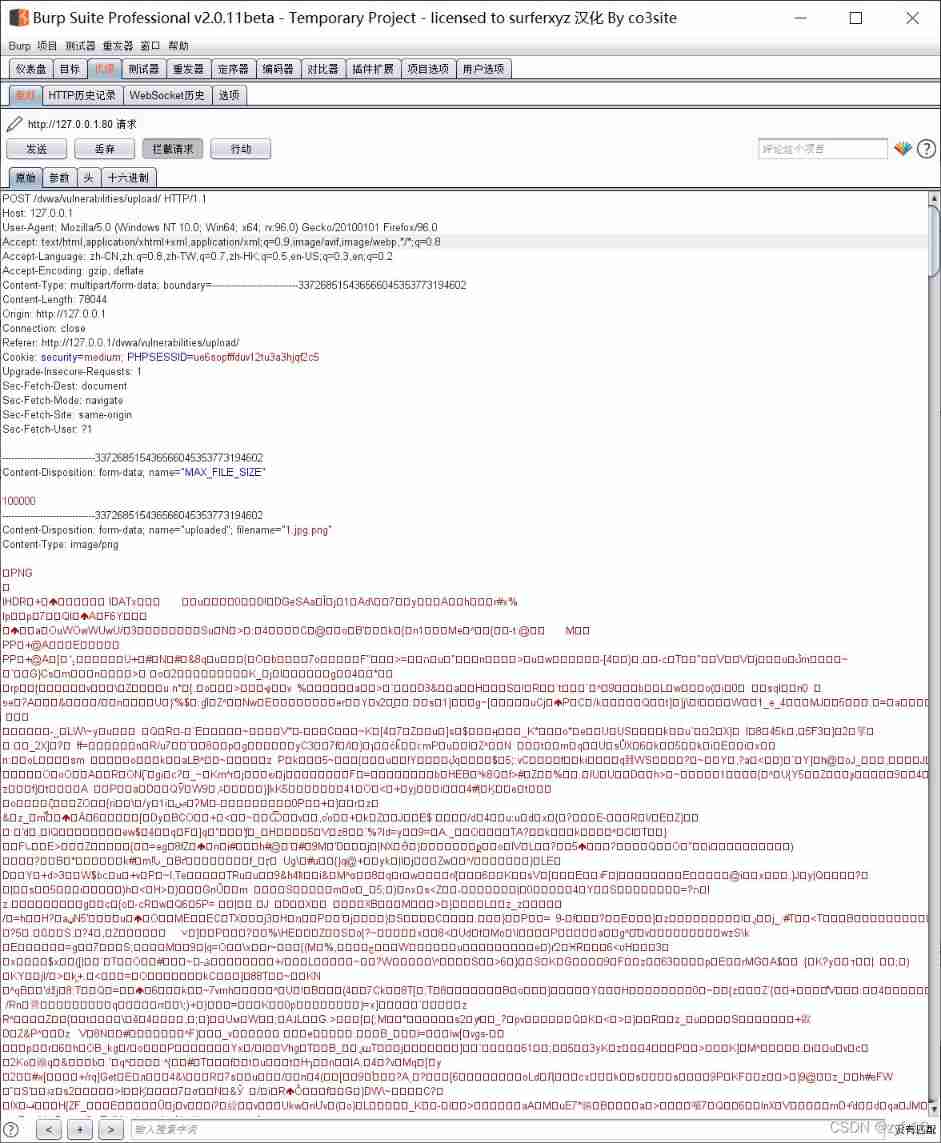当前位置:网站首页>Restore backup data on S3 compatible storage with tidb lightning
Restore backup data on S3 compatible storage with tidb lightning
2022-07-06 08:03:00 【Tianxiang shop】
This document describes how to put Kubernetes through TiDB Operator The backup data is restored to TiDB colony .
The recovery method used in this article is based on TiDB Operator v1.1 And above CustomResourceDefinition (CRD) Realization , The bottom layer uses TiDB Lightning TiDB-backend To recover data .
TiDB Lightning It is a high-speed import of full data to TiDB Clustering tools , Available from local disk 、Google Cloud Storage (GCS) or Amazon S3 Cloud disk reads data . at present ,TiDB Lightning Support three kinds of backend :Importer-backend、Local-backend、TiDB-backend. The method introduced in this article uses TiDB-backend. About the differences and choices of these three backend , see also TiDB Lightning file . If you want to use Importer-backend perhaps Local-backend Import data , see also Use TiDB Lightning Import cluster data .
The following examples will be compatible S3 The storage ( Specify the path ) The backup data on is restored to TiDB colony .
Use scenarios
If you need from compatible S3 Store and export backup data to TiDB colony , And have the following requirements for data recovery , You can use the recovery scheme introduced in this article :
- We hope to recover with low resource utilization and low network bandwidth utilization , And it's acceptable 50 GB/ Hours of recovery
- It is required to meet ACID
- During backup TiDB The cluster can still provide services
Preparation before recovery
Before data recovery , You need to prepare to restore the environment , And have the relevant permissions of the database .
Prepare to restore the environment
Download the file backup-rbac.yaml, And execute the following command in
test2This namespace Create the required for recovery RBAC Related resources :kubectl apply -f backup-rbac.yaml -n test2Remote storage access authorization .
If from Amazon S3 Recover cluster data , There are three ways to grant permissions , Reference resources AWS Account Authorization Authorized access is compatible S3 Remote storage of ; Use Ceph When testing recovery as back-end storage , It's through AccessKey and SecretKey Mode Authorization , Please refer to adopt AccessKey and SecretKey to grant authorization .
establish
restore-demo2-tidb-secretsecret, The secret Store to access TiDB Clustered root Account and key :kubectl create secret generic restore-demo2-tidb-secret --from-literal=user=root --from-literal=password=${password} --namespace=test2
Get the required database permissions
Use TiDB Lightning take Amazon S3 Restore the backup data on to TiDB Before cluster , Make sure you have the following permissions to back up the database :
| jurisdiction | Scope |
|---|---|
| SELECT | Tables |
| INSERT | Tables |
| UPDATE | Tables |
| DELETE | Tables |
| CREATE | Databases, tables |
| DROP | Databases, tables |
| ALTER | Tables |
Restore the specified backup data to TiDB colony
Be careful
because rclone There is problem , If you use Amazon S3 Store backup , also Amazon S3 Open the AWS-KMS encryption , You need yaml Add the following to the file spec.s3.options Configure to ensure successful backup recovery :
spec: ... s3: ... options: - --ignore-checksum
This section provides a variety of ways to store access . Just use the method that suits your situation .
- adopt AccessKey and SecretKey The way of authorization is determined by Ceph How to recover data
- adopt AccessKey and SecretKey The way of authorization is from Amazon S3 How to recover data
- By binding IAM And Pod The way from Amazon S3 How to recover data
- By binding IAM And ServiceAccount The way from Amazon S3 How to recover data
establish Restore customer resource (CR), Restore the specified backup data to TiDB colony .
Method 1: establish Restore custom resource (CR), adopt AccessKey and SecretKey Authorize the specified backup data by Ceph Restore to TiDB colony .
kubectl apply -f restore.yamlrestore.yamlThe contents of the document are as follows :--- apiVersion: pingcap.com/v1alpha1 kind: Restore metadata: name: demo2-restore namespace: test2 spec: backupType: full to: host: ${tidb_host} port: ${tidb_port} user: ${tidb_user} secretName: restore-demo2-tidb-secret s3: provider: ceph endpoint: ${endpoint} secretName: s3-secret path: s3://${backup_path} # storageClassName: local-storage storageSize: 1GiMethod 2: establish Restore custom resource (CR), adopt AccessKey and SecretKey Authorize the specified backup data by Amazon S3 Restore to TiDB colony .
kubectl apply -f restore.yamlrestore.yamlThe contents of the document are as follows :--- apiVersion: pingcap.com/v1alpha1 kind: Restore metadata: name: demo2-restore namespace: test2 spec: backupType: full to: host: ${tidb_host} port: ${tidb_port} user: ${tidb_user} secretName: restore-demo2-tidb-secret s3: provider: aws region: ${region} secretName: s3-secret path: s3://${backup_path} # storageClassName: local-storage storageSize: 1GiMethod 3: establish Restore custom resource (CR), adopt IAM binding Pod Restore the specified backup data to TiDB colony .
kubectl apply -f restore.yamlrestore.yamlThe contents of the document are as follows :--- apiVersion: pingcap.com/v1alpha1 kind: Restore metadata: name: demo2-restore namespace: test2 annotations: iam.amazonaws.com/role: arn:aws:iam::123456789012:role/user spec: backupType: full to: host: ${tidb_host} port: ${tidb_port} user: ${tidb_user} secretName: restore-demo2-tidb-secret s3: provider: aws region: ${region} path: s3://${backup_path} # storageClassName: local-storage storageSize: 1GiMethod 4: establish Restore custom resource (CR), adopt IAM binding ServiceAccount Restore the specified backup data to TiDB colony .
kubectl apply -f restore.yamlrestore.yamlThe contents of the document are as follows :--- apiVersion: pingcap.com/v1alpha1 kind: Restore metadata: name: demo2-restore namespace: test2 spec: backupType: full serviceAccount: tidb-backup-manager to: host: ${tidb_host} port: ${tidb_port} user: ${tidb_user} secretName: restore-demo2-tidb-secret s3: provider: aws region: ${region} path: s3://${backup_path} # storageClassName: local-storage storageSize: 1Gi
Create good
RestoreCR after , You can view the status of the recovery through the following command :kubectl get rt -n test2 -owide
The above examples will be compatible S3 The storage (spec.s3.path Under the path ) The backup data in is restored to TiDB colony spec.to.host. About compatibility S3 Stored configuration items , You can refer to S3 Field is introduced .
more Restore CR For detailed explanation of fields, please refer to Restore CR Field is introduced .
Be careful
TiDB Operator Will create a PVC, For data recovery , The backup data will be downloaded from the remote storage to PV, And then recover . If you want to delete this after the recovery PVC, You can refer to Delete resources First restore Pod Delete , Then take it. PVC Delete .
边栏推荐
- Chinese Remainder Theorem (Sun Tzu theorem) principle and template code
- Personalized online cloud database hybrid optimization system | SIGMOD 2022 selected papers interpretation
- 灰度升级 TiDB Operator
- From monomer structure to microservice architecture, introduction to microservices
- How to prevent Association in cross-border e-commerce multi account operations?
- "Designer universe" APEC design +: the list of winners of the Paris Design Award in France was recently announced. The winners of "Changsha world center Damei mansion" were awarded by the national eco
- A Closer Look at How Fine-tuning Changes BERT
- Artcube information of "designer universe": Guangzhou implements the community designer system to achieve "great improvement" of urban quality | national economic and Information Center
- MEX有关的学习
- 2.10transfrom attribute
猜你喜欢

Step by step guide to setting NFT as an ens profile Avatar

Description of octomap averagenodecolor function
![[research materials] 2022 China yuancosmos white paper - Download attached](/img/b4/422dff0510bbe67f3578202d6e80b7.jpg)
[research materials] 2022 China yuancosmos white paper - Download attached

珠海金山面试复盘

Uibehavior, a comprehensive exploration of ugui source code

The ECU of 21 Audi q5l 45tfsi brushes is upgraded to master special adjustment, and the horsepower is safely and stably increased to 305 horsepower

The ECU of 21 Audi q5l 45tfsi brushes is upgraded to master special adjustment, and the horsepower is safely and stably increased to 305 horsepower

ESP系列引脚说明图汇总

Convolution, pooling, activation function, initialization, normalization, regularization, learning rate - Summary of deep learning foundation

File upload of DVWA range
随机推荐
Nacos Development Manual
Esrally domestic installation and use pit avoidance Guide - the latest in the whole network
How to estimate the number of threads
从 TiDB 集群迁移数据至另一 TiDB 集群
Secure captcha (unsafe verification code) of DVWA range
Data governance: Data Governance under microservice architecture
[research materials] 2021 Research Report on China's smart medical industry - Download attached
07- [istio] istio destinationrule (purpose rule)
在 uniapp 中使用阿里图标
(lightoj - 1410) consistent verbs (thinking)
How to use information mechanism to realize process mutual exclusion, process synchronization and precursor relationship
WebRTC系列-H.264预估码率计算
Analysis of Top1 accuracy and top5 accuracy examples
软件开发的一点随记
[Yugong series] February 2022 U3D full stack class 011 unity section 1 mind map
ROS learning (IX): referencing custom message types in header files
数据治理:数据质量篇
23. Update data
二叉树创建 & 遍历
What are the ways to download network pictures with PHP